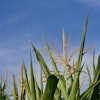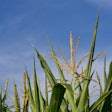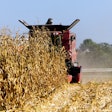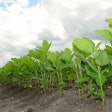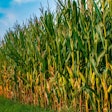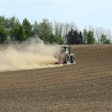
The latest U.S. Drought Monitor report reveals a complex picture for American agriculture, with some regions experiencing drought relief while others face worsening conditions.
The U.S. Drought Monitor, jointly produced by the National Drought Mitigation Center at the University of Nebraska-Lincoln, the United States Department of Agriculture, and the National Oceanic and Atmospheric Administration, shows significant shifts in drought conditions across the country.
In the Southwest, farmers and ranchers are grappling with intensifying drought. Severe drought expanded in northern New Mexico, while extreme and exceptional drought grew in coverage in far southwest New Mexico and southeast Arizona. This development raises concerns about irrigation water availability and potential impacts on crop yields in these regions.
"Very dry surface conditions and high evaporative demand continued amid severe precipitation deficits," said a spokesperson for the National Drought Mitigation Center. "This situation poses significant challenges for agricultural operations in the affected areas."
In contrast, parts of the Midwest saw improvements. Southern Minnesota, the Wisconsin Northwoods, and western Michigan's Upper Peninsula experienced reductions in drought and abnormal dryness. Improved soil moisture levels and decreased precipitation deficits offer a more positive outlook for corn and soybean producers in these areas as the planting season approaches.
However, the situation remains dire in southern Texas. Exceptional drought grew in coverage from near Eagle Pass to northwest of Del Rio, where short- and long-term precipitation deficits worsened, and soil moisture and groundwater levels declined. The San Antonio Water System has implemented Stage 3 restrictions, while Stage 4 restrictions are in place for farmers and pumpers operating in the Edwards Aquifer.
In south Florida, moderate and severe drought expanded, and extreme drought developed as high fire danger continued to grow amid decreasing streamflow and soil moisture.
Looking ahead, the National Weather Service Climate Prediction Center's forecast for April 22-26 favors above-normal precipitation in much of the central and southern U.S., especially in Oklahoma, Texas, Arkansas, and Louisiana. This could bring some relief to drought-stricken agricultural areas.
As farmers navigate these shifting drought patterns, adaptive strategies in water management and crop selection will be crucial. The varied conditions across the country underscore the complex challenges facing U.S. agriculture in an era of changing climate patterns.

